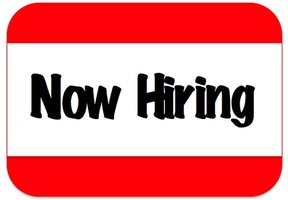
Jay Van Bavel and Tessa West, both social psychologists at New York University, recently wrote in The Wall Street Journal about implicit bias in hiring. Their premise is we prefer people similar to ourselves and this can unconsciously affect our hiring practices. It especially makes hiring a diverse workforce more problematic. Here are several of their suggestions followed by my comments:
- “Check the job description.” Be sure the job description is not inadvertently biased, thus limited the applicant pool. For example, recruiting for a “salesman” vs. neutrally phrased “position in sales.”
- “Recruit outside your comfort zone.” Does your company usually hire from the same three or four universities or colleges? Are you looking for people demographically the same as your current employees?
- “Evaluate every resume the same way.” Critical. We read resumes and process them through our lens. We may unknowingly respond to subtle cues that bias us for or against an applicant.
- “Identify what you want before interviews begin.” Often overlooked. What you really want may vary based on whom you ask? I may want someone with good leadership skills to head up a project. You may want someone with the most up-to-date technical skills. We should have some agreement on the what we want from our new hire.
- “Stick to a script during interviews.” This is standard, often repeated advice – but usually not followed. Nolan and Highhouse (2014) cited Ryan and associates who found “only 35% of U.S. companies reported using standardized interview questions for each applicant.”
- “Ensure decisions are based on the right metrics.” If you agree prior to interviews on what you want and stay aware of potential implicit biases, then you should be able to make evidence-based decisions.
- “Continually analyze the process.” Improvement in hiring is difficult without an “after hire” review of what went well and what did not. In my experience this is rare. Continuous improvement should be built into the hiring process, just like other processes.
My take-aways:
1. Van Bavel and West offer excellent suggestions to improve hiring. In my opinion the first and most important activity though is not listed: job analysis. Job analysis will determine “the job-relatedness of the tasks and competencies needed to successfully perform the job” (OPM). A good job analysis makes all personnel decisions easier and more accurate.
2. In Decoding the Workplace I stated that “many (organizations) are looking for people who fit the organization’s culture, people who will assimilate more quickly into its workforce – people who have ‘the right stuff’ for that organization” (p. 68). This is not inconsistent with acquiring a diverse workforce. Standardized, job-related questions, especially involving often encountered workplace situations, may be useful.
3. We all have implicit biases. The key is to be aware they exist and try to recognize our own. For example, in Decoding the Workplace I discuss how most of us probably have implicit biases associated with sex-role stereotypes. Examine performance appraisals you may write. Do you use different types of words describing men (“true leader, dynamic”) versus women (“good administrator, works well with others”)? Self awareness can be tough but the insights developed can make us better leaders -- and people.
Van Bavel, J. J., & West, T. V. (2017, February 21). Seven Steps to Reducing Bias in Hiring. The Wall Street Journal, p. R2.
Nolan, K. P., & Highhouse, S. (2014) Need for autonomy and resistance to standardized employee selection practices. Human Performance, 27(4), 328–346.
Ryan, A. M., McFarland, L., Baron, H., & Page, R. (1999). An international look at selection practices: Nation and culture as explanations for variability in practice. Personnel Psychology, 52, 359–391.
Image, "Now Hiring Sign" by JAnstee (WMF) February 2014.
Retrieved from: https://commons.wikimedia.org/wiki/File:Now_Hiring.png
Used with permission: https://creativecommons.org/licenses/by-sa/3.0/
© John Ballard, PhD, 2017. All rights reserved.
Author of Decoding the Workplace, BEST CAREER BOOK Next Generation Indie Book Awards.
_________________________
"Decoding the Workplace: 50 Keys to Understanding People in Organizations is as informed and informative a read as it is thoughtful and thought-provoking. . . Decoding the Workplace should be considered critically important reading for anyone working in a corporate environment." —Midwest Book Review
 RSS Feed
RSS Feed